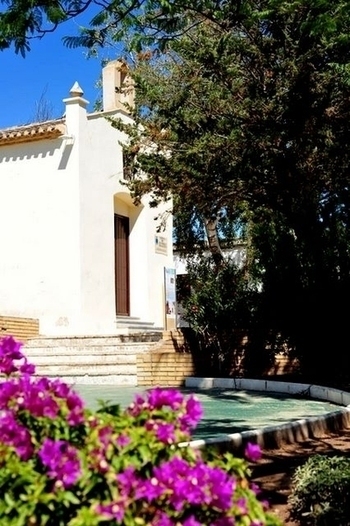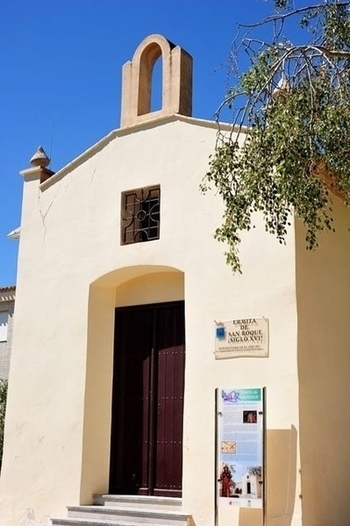

Guidelines for submitting articles to Santa Rosalia Today
Hello, and thank you for choosing Santa Rosalia.Today to publicise your organisation’s info or event.
Santa Rosalia Today is a website set up by Murcia Today specifically for residents of the urbanisation in Southwest Murcia, providing news and information on what’s happening in the local area, which is the largest English-speaking expat area in the Region of Murcia.
When submitting text to be included on Santa Rosalia Today, please abide by the following guidelines so we can upload your article as swiftly as possible:
Send an email to editor@spaintodayonline.com or contact@murciatoday.com
Attach the information in a Word Document or Google Doc
Include all relevant points, including:
Who is the organisation running the event?
Where is it happening?
When?
How much does it cost?
Is it necessary to book beforehand, or can people just show up on the day?
…but try not to exceed 300 words
Also attach a photo to illustrate your article, no more than 100kb

The Ermita de San Roque in Fuente Álamo
The church of San Roque in Fuente Álamo
 The small church known as the Ermita of San Roque in Fuente Álamo is in some ways a little miracle, in that it has managed to survive 400 years intact despite a turbulent history of abandonment and repair.
The small church known as the Ermita of San Roque in Fuente Álamo is in some ways a little miracle, in that it has managed to survive 400 years intact despite a turbulent history of abandonment and repair.
Fuente Álamo developed around the water source which bears its name and initially a simple chapel in the location of the main church of San Agustín served the needs of the population. In 1520 a farming concession was issued which encouraged more residents to settle permanently in the area, and in 1583 the first simple chapel of San Agustín was enlarged to become a more solid structure.
The little chapel dedicated to San Roque was built sometime between these two dates, although the church of San Agustín remained the main place of worship in Fuente Álamo and was enlarged several times more to become the impressive building it is today.
However, the chapel of San Roque is the oldest and most historic temple remaining in the municipality of Fuente Álamo, as much of the structure which remains today dates back to the late 16th century and is still similar to the way it was at the time of its original construction.
San Roque was used as a place of worship until the 17th century, but by the 18th century it had fallen into a state of neglect. Its location on the outskirts of town and the size of the church of San Agustín made it superfluous to requirements, so it was agreed that it should be put to use as a hospital where the sick and homeless could be taken in. However, lack of space meant that ultimately it was necessary to construct a second building alongside, and this eventually superseded the original chapel, which was demolished at a later date.
During the reign of Carlos IV (1788-1808) the need arose to put the Royal Treasury’s books in order, and all property belonging to hospitals, hospices and poorhouses was put up for public auction. On 8th May 1804 the properties of the Cofradía de San Roque, consisting of the church in Fuente Álamo and the land around it, were acquired by José Verger de Villafranca, a resident of Murcia, for the sum of 425 reales.
 Some years later, however, there was an outbreak of fever in Fuente Álamo, and the chapel was abandoned again until Magdalena Hernández, wife of the tradesman Antonio Olivares, decided to pay for repair and reform work to be carried out. All that documentary evidence tells us is that she was fulfilling a promise she had made to San Roque, although there is no hint of what miracle San Roque had achieved on her behalf for her to rehabilitate the little church yet again, but she contracted Antonio Caballero, a craftsman from Murcia, to create an altarpiece and a bell.
Some years later, however, there was an outbreak of fever in Fuente Álamo, and the chapel was abandoned again until Magdalena Hernández, wife of the tradesman Antonio Olivares, decided to pay for repair and reform work to be carried out. All that documentary evidence tells us is that she was fulfilling a promise she had made to San Roque, although there is no hint of what miracle San Roque had achieved on her behalf for her to rehabilitate the little church yet again, but she contracted Antonio Caballero, a craftsman from Murcia, to create an altarpiece and a bell.
Still this was not the last of the ups and downs in the building’s history. During the Civil War it was ransacked by the militia, there were various moves to demolish it, and at one point it was even proposed that the headquarters of the Guardia Civil be built alongside it, absorbing it into the new structure.
Finally it was restored yet again in 2001, the latest version of the building overseen by Agustín Carrascosa, who also acquired the image of the Saint which is housed inside the church from the "Anónima Mató" workshops in Olot, in the Catalan province of Girona.
Today it is usually closed, but is used from time to time as a venue for cultural activities and exhibitions, the shady gardens providing a pleasant location for local residents and their dogs.
Location
The Ermita de San Roque is tucked away behind the main streets of Fuente Álamo, at the top of a small hill behind the Álamo printworks, and the main indication that there is something interesting is the presence of a fountain set in a tiled floor at the foot of the steps. Walk up the steps, and it's a real surprise to find the chapel on a triangle of land, with the streets Avenida de Andalucía, Calle de Juan Pérez and Calle Pedro Guerrero surrounding it.
Click for map: Ermita de San Roque Fuente Álamo.
